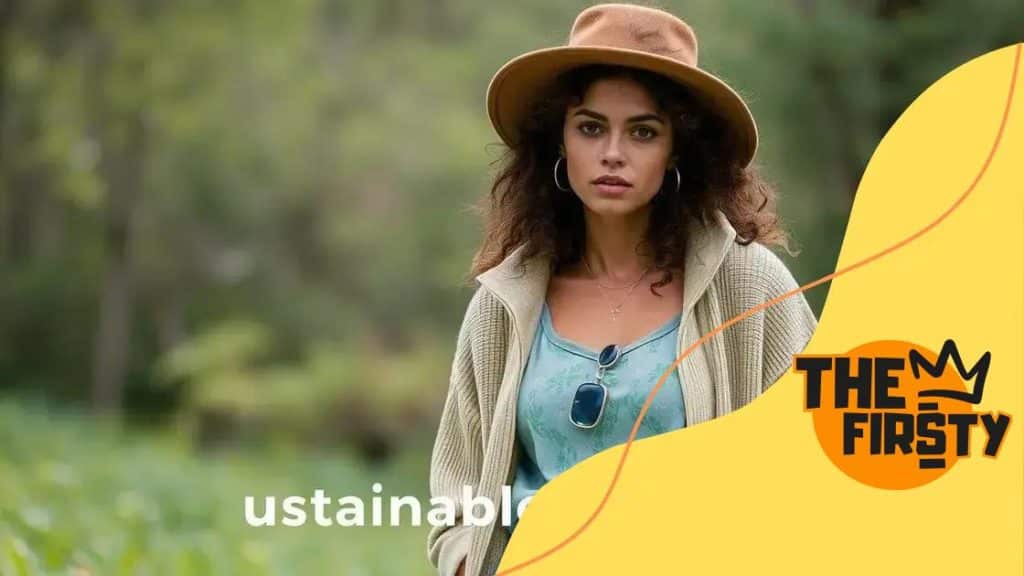The rise of sustainable fashion and its market impact

Anúncios
The rise of sustainable fashion is reshaping the industry by prioritizing eco-friendly practices and ethical production, driven by consumer demand and innovative technologies.
The rise of sustainable fashion is transforming the textile industry and influencing our choices as consumers. Have you noticed more brands advocating for eco-friendly practices? In this article, we’ll delve into how these changes impact the market and our shopping experiences.
Anúncios
Understanding sustainable fashion
To grasp the concept of sustainable fashion, it is essential to understand its purpose. This evolving trend promotes eco-friendly practices and encourages brands to create clothes with a minimal environmental impact. But what does that mean for the industry and consumers?
Sustainable fashion aims to reduce waste and encourage the use of organic materials. This means choosing materials that can break down easily and produce less pollution. Many brands design their clothing lines with sustainability in mind, ensuring that each piece is both stylish and good for the planet.
Key Principles of Sustainable Fashion
Let’s look at the cornerstones of this exciting movement:
Anúncios
- Ethical production: Ensures fair wages and safe working conditions.
- Material selection: Prioritizes organic or recycled materials.
- Longevity: Focuses on creating garments that stand the test of time.
- Transparency: Maintains clear practices regarding sourcing and production.
By embracing these principles, brands can appeal to a growing market of conscious consumers. As people become more aware of their fashion choices, they look for brands aligning with their values. This shift encourages manufacturers to innovate and adopt more sustainable practices.
Moreover, sustainable fashion isn’t just about the clothing itself; it encourages a new approach to consumption. A focus on quality over quantity helps consumers make more informed decisions. By buying less and choosing wisely, shoppers can actively reduce their fashion footprint.
The Role of Education
Education plays a crucial role in the rise of sustainable fashion. As consumers learn about the impacts of fast fashion, they begin to make smarter choices. Many organizations and influencers work hard to spread the word about sustainable fashion, creating awareness and promoting changes in buying habits.
Overall, the understanding of sustainable fashion is more than a trend; it reflects a crucial shift in how we perceive our clothing. The more we learn and adapt, the better our impact on the planet and the industry can be.
The environmental impact of fast fashion
The environmental impact of fast fashion is a pressing issue in today’s world. Many people are unaware of the damage caused by cheap, disposable clothing. Fast fashion accelerates consumption and leads to significant waste. It’s important to explore these effects to understand why we should shift our habits.
To grasp the full impact, consider that the fast fashion industry produces millions of garments every year. This volume results in vast amounts of textile waste. When we discard clothes, they often end up in landfills, where they take years to decompose. This contributes heavily to the global waste crisis.
Water Usage
Another critical concern is water consumption in the production of clothing. It is estimated that producing one t-shirt requires about 2,700 liters of water. Here are some other alarming statistics:
- Cotton farming: Uses large amounts of water and pesticides.
- Textile dyeing: Pollutes water sources with toxic chemicals.
- Water pollution: Affects local communities and ecosystems.
The excessive use of water in the fast fashion industry not only depletes local resources but also harms the environment. Many areas suffer from water scarcity due to these practices, creating serious ethical concerns.
Carbon Footprint
The carbon footprint of fast fashion is another aspect we cannot ignore. The production, transportation, and disposal phases all contribute to greenhouse gas emissions. Switching to sustainable fashion practices can significantly reduce our carbon footprint.
As consumers, we hold power in our purchasing decisions. By choosing sustainable options, we can encourage brands to prioritize the environment. Treating our clothing choices with care means we can impact the industry positively.
Understanding the environmental impact of fast fashion is crucial for making informed choices. In today’s world, shifting toward more sustainable habits can foster a better future for our planet.
Consumer trends driving change

Consumer trends are crucial in shaping the future of sustainable fashion. Many shoppers today prioritize ethical considerations alongside style. Understanding these trends can help brands adapt and thrive in a rapidly changing market.
As more information becomes available, consumers are becoming aware of the true cost of fast fashion. This awareness drives a shift toward brands that promote sustainability. People want to align their values with their purchases, which significantly influences their decisions.
Demand for Transparency
One significant trend is the growing demand for transparency from brands. Customers now expect to know where and how their clothes are made. Key factors include:
- Ethical sourcing: Brands must demonstrate they source materials responsibly.
- Fair labor practices: Consumers want to ensure workers are treated well and paid fairly.
- Sustainable practices: Knowing a brand’s environmental impact matters to shoppers.
This demand for transparency places pressure on companies to improve their practices. Brands must communicate their efforts effectively to build trust with their audiences.
Shift Toward Minimalism
Another trend is the shift toward minimalism. Many consumers are now embracing simple and functional wardrobes. This trend reduces clutter and focuses on quality over quantity. Minimalism encourages the purchase of timeless pieces that last and have versatile uses.
As a result, consumers are less likely to buy multiple cheap items and instead invest in higher-quality garments. This change has significant implications for brands. They must step up their game to deliver quality products that align with this trend. Furthermore, as more individuals adopt minimalist lifestyles, the demand for responsibly made clothing is likely to increase.
Additionally, many consumers are turning to second-hand shopping to achieve sustainability goals. Thrift shops and online resale platforms are booming. This trend extends the life cycle of clothing and allows consumers to make stylish choices without contributing to new production. Shoppers appreciate finding unique pieces while reducing waste.
Ultimately, understanding these consumer trends driving change is vital for brands that wish to thrive in the future. As consumers continue to seek sustainability in their purchasing habits, the industry must adapt.
Key players in the sustainable fashion market
Key players in the sustainable fashion market are making significant strides to change the industry. These brands focus on eco-friendly practices, ethical production, and transparency. They play a vital role in influencing consumer behavior and shifting the industry toward more sustainable practices.
Leading brands often set the standards for others to follow. Many of these companies prioritize sustainable materials and responsible manufacturing processes. By offering eco-friendly clothing options, they attract environmentally conscious consumers.
Notable Brands
Several brands are recognized for their commitment to sustainability:
- Patagonia: Known for its outdoor clothing, Patagonia emphasizes environmental responsibility and has a recycling program for old gear.
- Everlane: This brand focuses on transparency, sharing the true costs involved in making their clothes while producing in ethical conditions.
- Reformation: Reformation produces stylish women’s clothing made from sustainable materials, often highlighting their positive environmental impact.
- People Tree: This pioneer of sustainable fashion uses fair trade principles and organic cotton to create beautiful garments.
These brands not only lead by example but also inspire others in the industry to adopt sustainable practices. By prioritizing ethical production, they highlight the importance of worker rights and the environment.
The Role of Startups
The sustainable fashion movement is also driven by innovative startups. Younger brands often leverage technology to create eco-friendly apparel. They appeal to a generation looking for change and willing to support new ideas.
Many startups focus on circular fashion, which aims to design clothes that can be reused or recycled. This approach reduces waste and promotes sustainability. By using technology for better materials and production methods, these companies are reshaping the market.
As these key players gain popularity, they encourage larger brands to follow suit. The impact of sustainable practices ripples through the industry, influencing retailers and consumers alike. The growing demand for ethical fashion leads to more options for shoppers and a brighter future for the environment.
Future prospects for sustainable fashion
The future prospects for sustainable fashion look promising as the industry continues to evolve. As more consumers demand eco-friendly options, brands are finding innovative ways to adapt and thrive. This includes incorporating advanced technologies and sustainable practices into their business models.
The increasing awareness of environmental issues is pushing brands to focus on reducing their carbon footprint. Many companies are setting ambitious sustainability goals. This trend influences their production processes and material choices. For instance, some are turning to recycled materials or new biodegradable fabrics.
Innovation and Technology
Innovation plays a crucial role in the growth of sustainable fashion. Technologies such as 3D printing and digital design allow brands to create products with minimal waste. The advantages include:
- Customization: Customers can receive tailored clothing that fits perfectly.
- Reduced waste: These methods often reduce excess fabric discarded during traditional manufacturing.
- Efficiency: The production process can become faster and more resource-efficient.
As these technologies become more accessible, more brands are likely to adopt them, driving further changes in the industry.
Consumer Influence
Consumers are vital in shaping the future landscape of sustainable fashion. Their preferences impact what retailers offer. As a result, brands are increasingly attentive to consumer feedback and demands. This shift leads to various sustainable options, such as rental services, thrift stores, and subscription models.
These alternatives not only extend the life of garments but also encourage less overall consumption. Additionally, education about sustainable practices empowers consumers to make informed choices about their clothing purchases.
With every purchase, individuals can help create a more sustainable future. By supporting brands committed to ethical practices, consumers can significantly influence the market and inspire change.
Overall, the future of sustainable fashion is bright, driven by innovation and consumer demand. As the industry moves toward more responsible practices, it holds the potential to build a better relationship with our planet.
FAQ – Frequently Asked Questions about Sustainable Fashion
What is sustainable fashion?
Sustainable fashion refers to clothing and accessories that are produced with minimal environmental impact, focusing on ethical practices and recyclable materials.
Why is sustainable fashion important?
Sustainable fashion is important because it helps reduce waste, pollution, and exploitation in the fashion industry, promoting a healthier planet.
How can I support sustainable fashion?
You can support sustainable fashion by choosing brands that prioritize eco-friendly practices, buying second-hand, and reducing your overall consumption of clothing.
What are the trends driving sustainable fashion?
Key trends include increased consumer awareness, demand for transparency, innovations in technology, and a shift toward minimalist and ethical purchasing habits.





